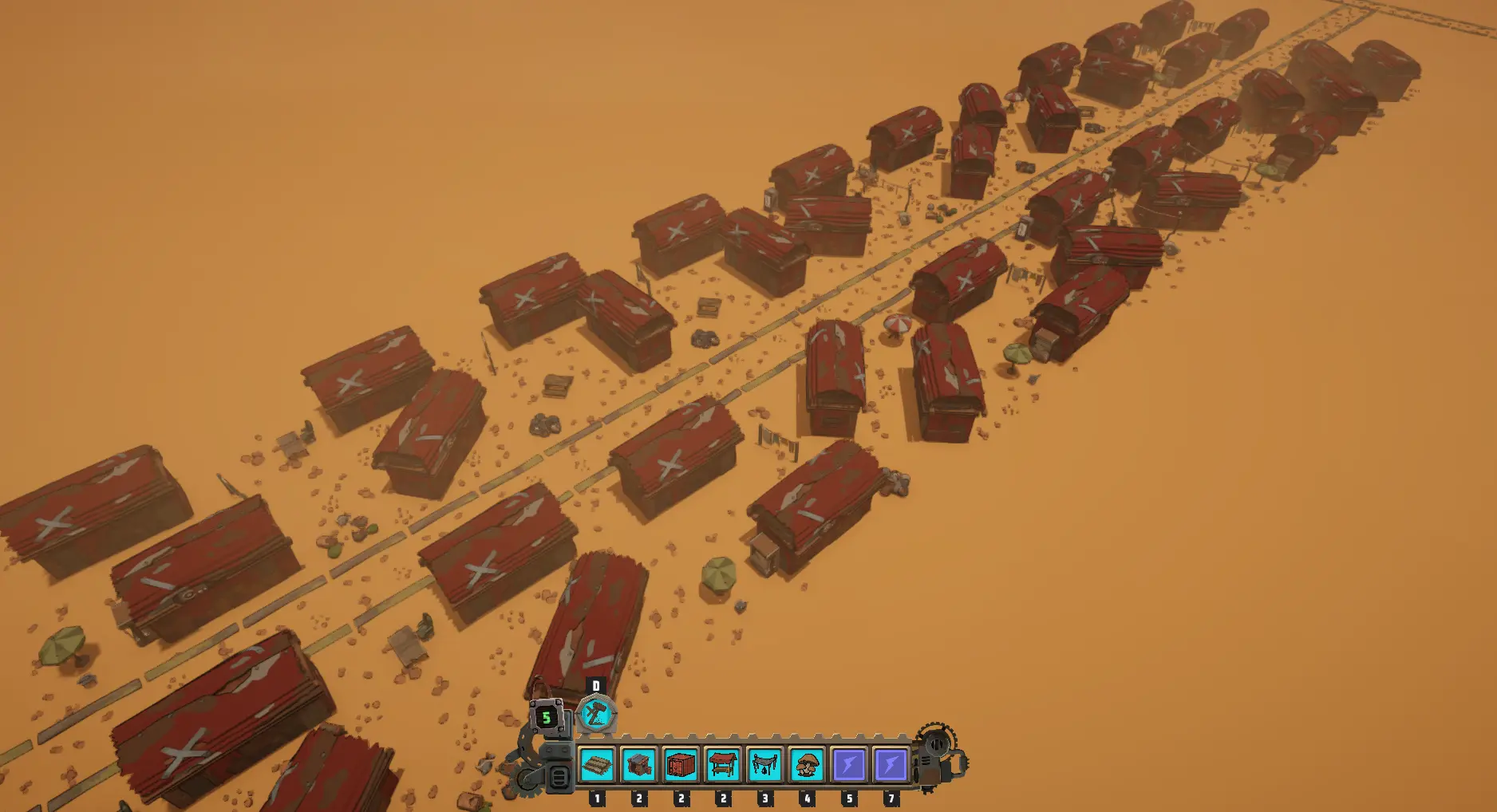
Shelter Comes First. In the harsh dustlands of a post-apocalyptic setting, survival doesn’t begin with food, water, or trade. It starts with a roof.
And not even a good one.
Just a few slabs of rusted metal, some makeshift wood, and enough hope to stand another day.
This post is about how I designed the first homes of the citizens — the scavenger-tier shacks — and what they mean for survival, expansion, and storytelling in the wasteland.
Origins: From Tents to Rusted Roofs
Before there were shacks, there were tents.
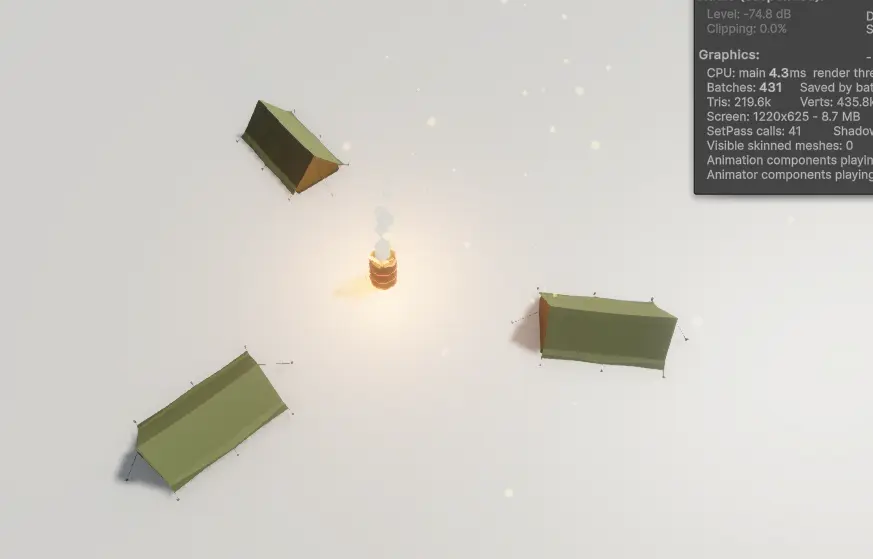
The original concept featured simple canvas tents surrounding a communal fire — basic, temporary, and plausible for the setting. But it didn’t scale:
- Tents lacked personality and permanence.
- They didn’t fit well into the upgrade path.
- Visually, they blended into each other and broke immersion.
The shift to shacks wasn’t just a style decision — it was about committing to a foundation for long-term survival.
The Shack: More Than Just a Box
Each shack in the game houses up to 3 scavengers at start. After fulfilling basic needs, the population per house grows. It’s the most basic form of shelter — cobbled together from scavenged panels, wood planks, and anything that can hold against the wind.
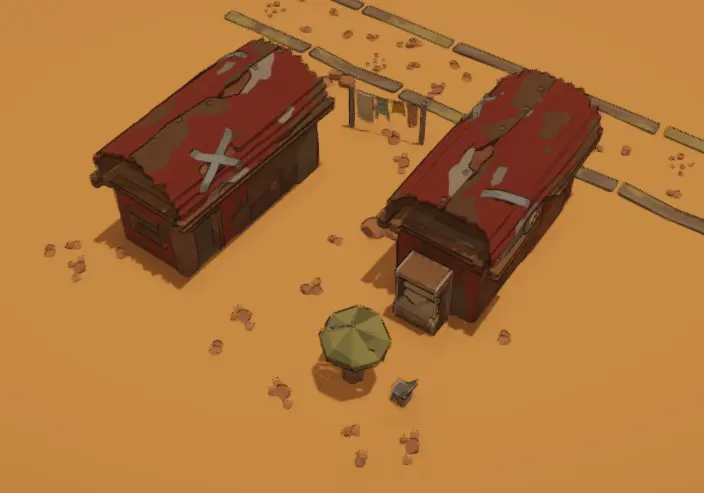
The design goal was to reflect desperation and resilience in equal measure. These homes are fragile, temporary, and yet home.
Shack Variations: Visual Storytelling Through Scrap
To avoid visual monotony — and to support worldbuilding — I implemented shack variation early on. Though mechanically identical, each shack can look and feel a little different.
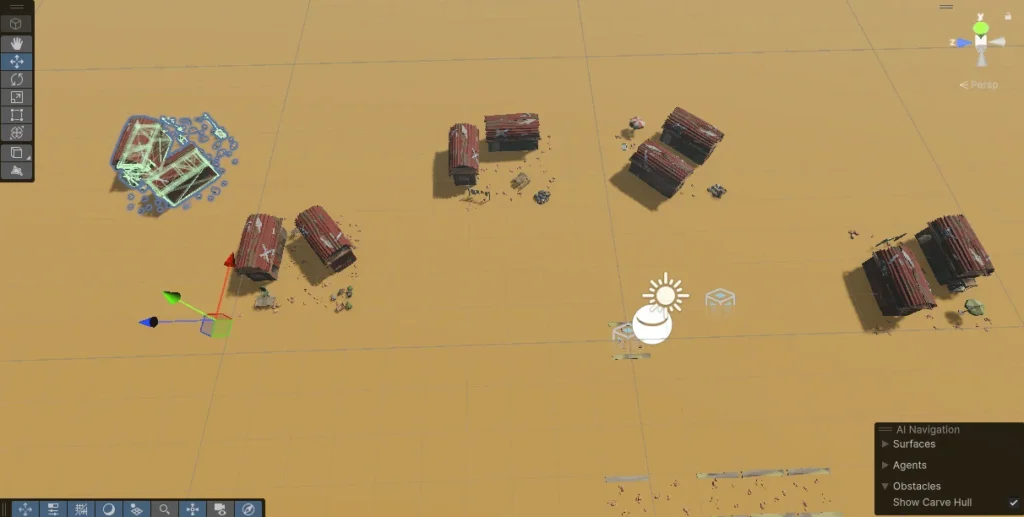
The differences include:
- Shack’s layout in a 3×3 grid
- Props as a sign of life
- Small rocks to vary the setting
These tiny changes do a lot:
- They create a more organic feel when settlements grow.
- They let players imagine stories around each dwelling.
- They provide visual feedback on neighborhood density without UI clutter.
Variation also helps prepare for future mechanics like morale, fire risk, and housing upgrades.
Laying Out Hope: Housing Grids and Road Planning
The shack layout is road-centric. In Andara, road access matters — not just for carriers and logistics, but for citizens themselves. Future systems like market access, fire protection, and event response all depend on connectivity.
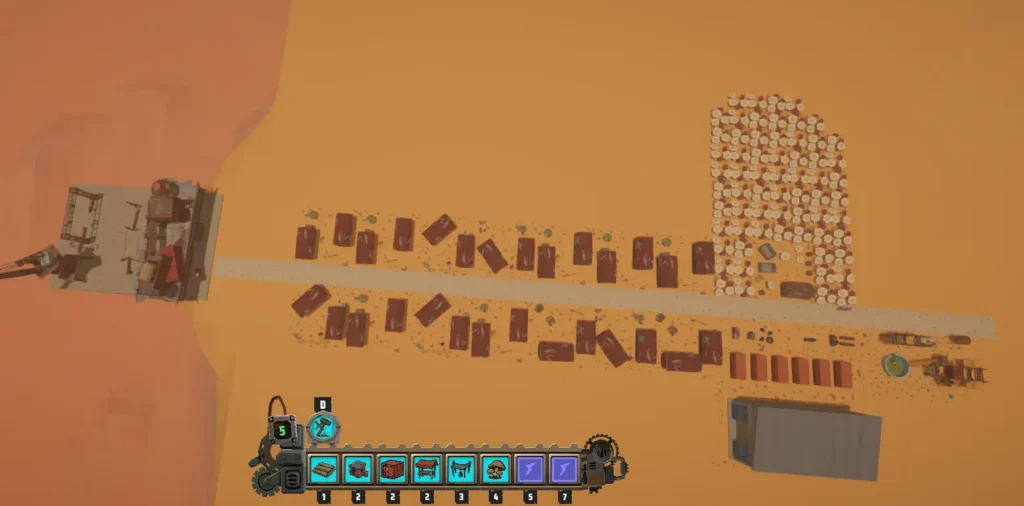
Allowing buildings to be placed without road access (and then showing a warning) gives players flexibility early on, while still nudging them toward efficient layouts.
Now that I see the top-down image, I might add a random 90-degree rotation to make it even more varied.
Final Thoughts
Designing the shack system wasn’t just about giving players a place to house people. It was about setting the tone for the entire game:
- Survival is hard.
- Progress is visual.
- And every home has a story.
In future posts, I’ll cover resource production, market systems, and how Power Shards shape your economy and tier progression.
Until then — patch your roof, light the fire barrel, and keep building.
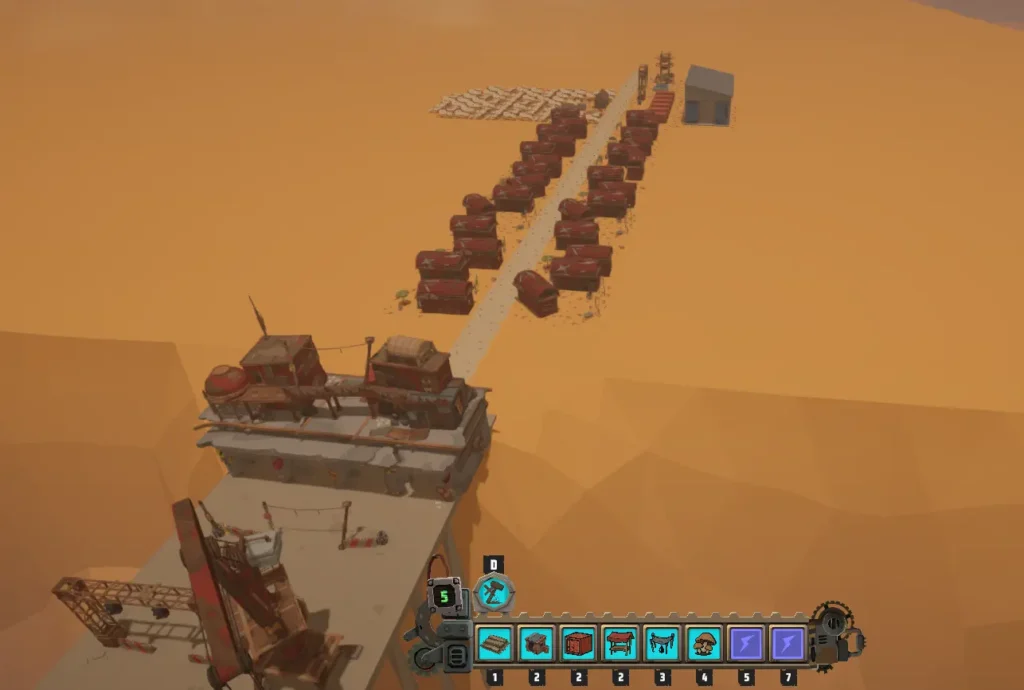
Check out here how I has the initial trigger about this game.